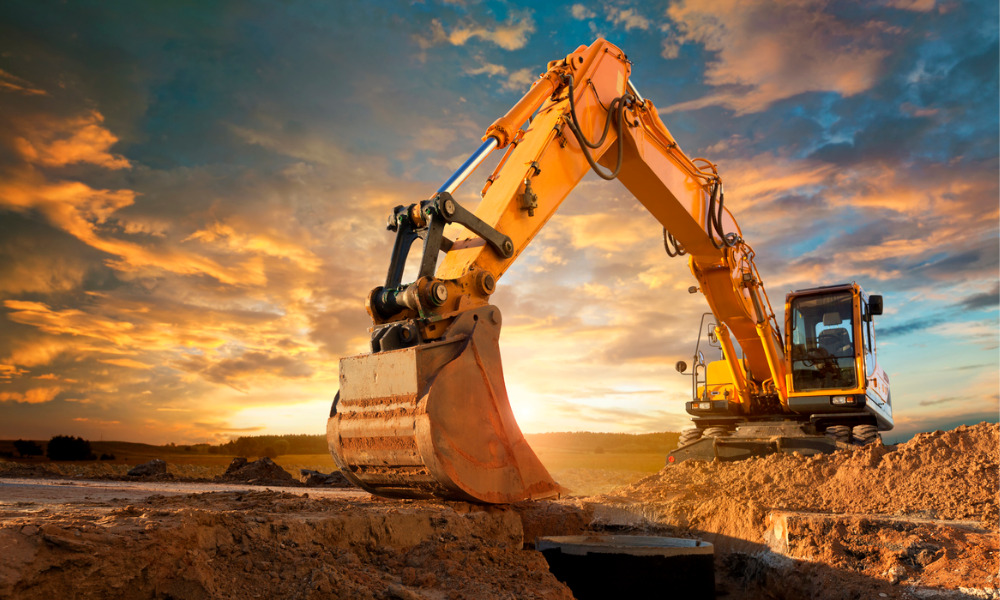Scissor Lift Rental: Safe and Effective Solutions
Wiki Article
Renting Out Vs. Purchasing Building And Construction Equipment: Making the Right Option for Your Project
When starting a building and construction job, among the important choices that project managers and stakeholders deal with is whether to buy or rent construction devices. Both choices have their downsides and advantages, making the choice a crucial one in the task preparation procedure. The decision pivots on numerous factors such as cost factors to consider, job period, devices upkeep, versatility, risk, and scalability administration. Each aspect plays an important function in figuring out one of the most appropriate path for the job's equipment needs. dozer rental. Let's explore these factors even more to recognize exactly how they influence the decision-making procedure and eventually the success of the project.Price Factors To Consider
When examining the economic element of leasing versus purchasing building equipment, the lasting expenses and ahead of time prices have to be very carefully taken into consideration. Renting tools often requires lower initial settlements compared to purchasing, making it an eye-catching choice for short-term projects or contractors with spending plan restrictions. Renting removes the demand for large resources outlays and lowers the economic threat linked with tools ownership, such as maintenance and devaluation prices. Nevertheless, over time, continuously leasing devices can accumulate greater prices than acquiring, particularly for extensive jobs.On the other hand, getting building equipment includes higher upfront costs yet can lead to long-lasting financial savings, especially for frequent users or lasting tasks. Having devices gives adaptability, ease, and the possibility for resale worth once the task is completed. In addition, possessing equipment enables for customization and experience with particular machinery, possibly raising efficiency and productivity on-site. Inevitably, the choice in between acquiring and leasing construction tools rests on the project's duration, regularity of use, budget considerations, and lasting economic objectives.
Project Period

Alternatively, for lasting tasks or recurring construction work, purchasing devices could be the more economical alternative. Investing in equipment can lead to cost financial savings over time, particularly if the equipment will certainly be regularly used. Moreover, possessing devices offers a sense of control over its availability and enables for customization to fit certain job needs.

Equipment Upkeep
Provided the crucial role job period plays in establishing the most cost-efficient method in between renting out and buying construction equipment, the emphasis now changes in the direction of analyzing the crucial facet of tools upkeep. Correct upkeep is essential for making certain the optimal performance and long life of building equipment. Leasing tools usually includes the benefit of having properly maintained machinery supplied by the rental company. This can reduce the problem of maintenance tasks from the project owner or service provider, saving effort and time. On the various other hand, having tools needs an aggressive approach to maintenance to stop break downs, make sure safety, and prolong the tools's lifespan. Normal inspections, servicing, and timely repair services are necessary to keep owned tools in top functioning condition. Consider upkeep costs when deciding in between leasing and getting, as ignoring upkeep can result in expensive repair work, downtime, and task delays. Ultimately, a well-maintained construction equipment fleet, whether rented or had, is important for the successful and reliable completion of building jobs.Versatility and Scalability
In the world of building devices administration, the aspect of flexibility and scalability holds considerable significance for task efficiency and source application. Deciding to rent out building and construction equipment provides a high level of versatility as it allows for the fast modification of devices kinds and amounts based on the advancing requirements of a task.Leasing construction tools provides the advantage of conveniently scaling procedures up or down as project demands rise and fall. Service providers can swiftly exchange or include tools to match the project's altering requirements without the constraints of possessing possessions that may come to be underutilized or out-of-date.
Threat Management
Effective risk monitoring in building and construction equipment procedures is paramount to guaranteeing task success and mitigating prospective monetary losses. Building tasks naturally include numerous threats, such as devices break downs, accidents, and job delays, which can dramatically affect the project timeline and budget plan. By very carefully thinking about the risks connected with owning or renting out construction tools, job supervisors can navigate here make educated choices to reduce these prospective hazards.Renting building tools can provide a level of risk reduction large backhoe by transferring the duty of repair and maintenance to the rental company. This can lower the economic problem on the task owner in situation of unanticipated devices failures (scissor lift rental). In addition, renting out offers the versatility to access specific equipment for particular job stages, minimizing the risk of having underutilized machinery
On the various other hand, possessing building devices provides a sense of control over its usage and upkeep. Nonetheless, this also implies bearing the full responsibility for repair work, upkeep expenses, and devaluation, boosting the monetary dangers related to equipment ownership. Mindful threat evaluation and factor to consider of factors such as job duration, tools application, and maintenance needs are essential in establishing the most ideal alternative for reliable threat management in building projects.
Conclusion
In verdict, when choosing between purchasing and leasing building tools, it is necessary to take into consideration cost, task duration, devices maintenance, flexibility, scalability, and threat administration. Each factor plays an essential role in determining one of the most appropriate choice for the job available. By very carefully evaluating these aspects, job supervisors can make an informed choice that lines up with their spending plan, timeline, and view it now overall project goals.
Report this wiki page